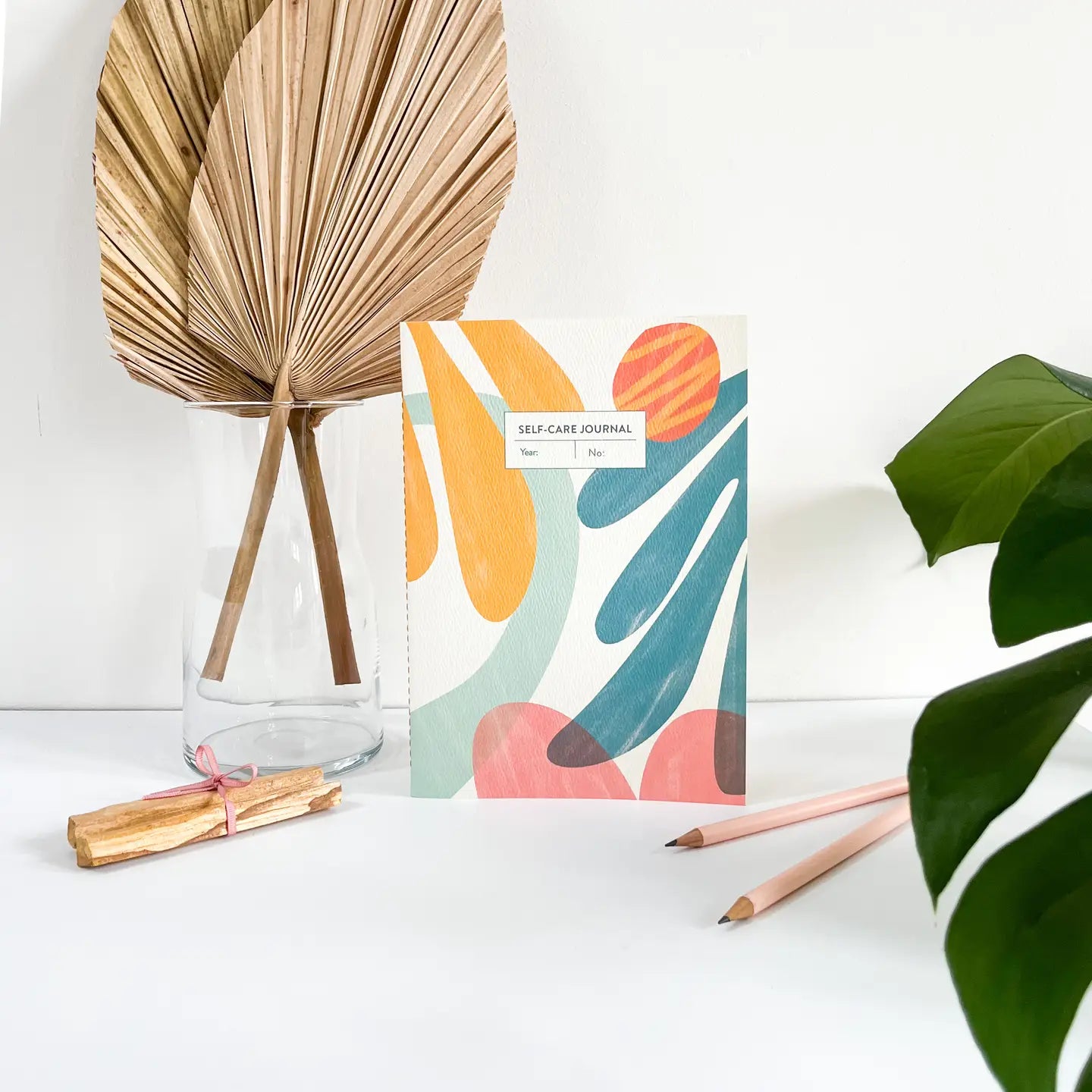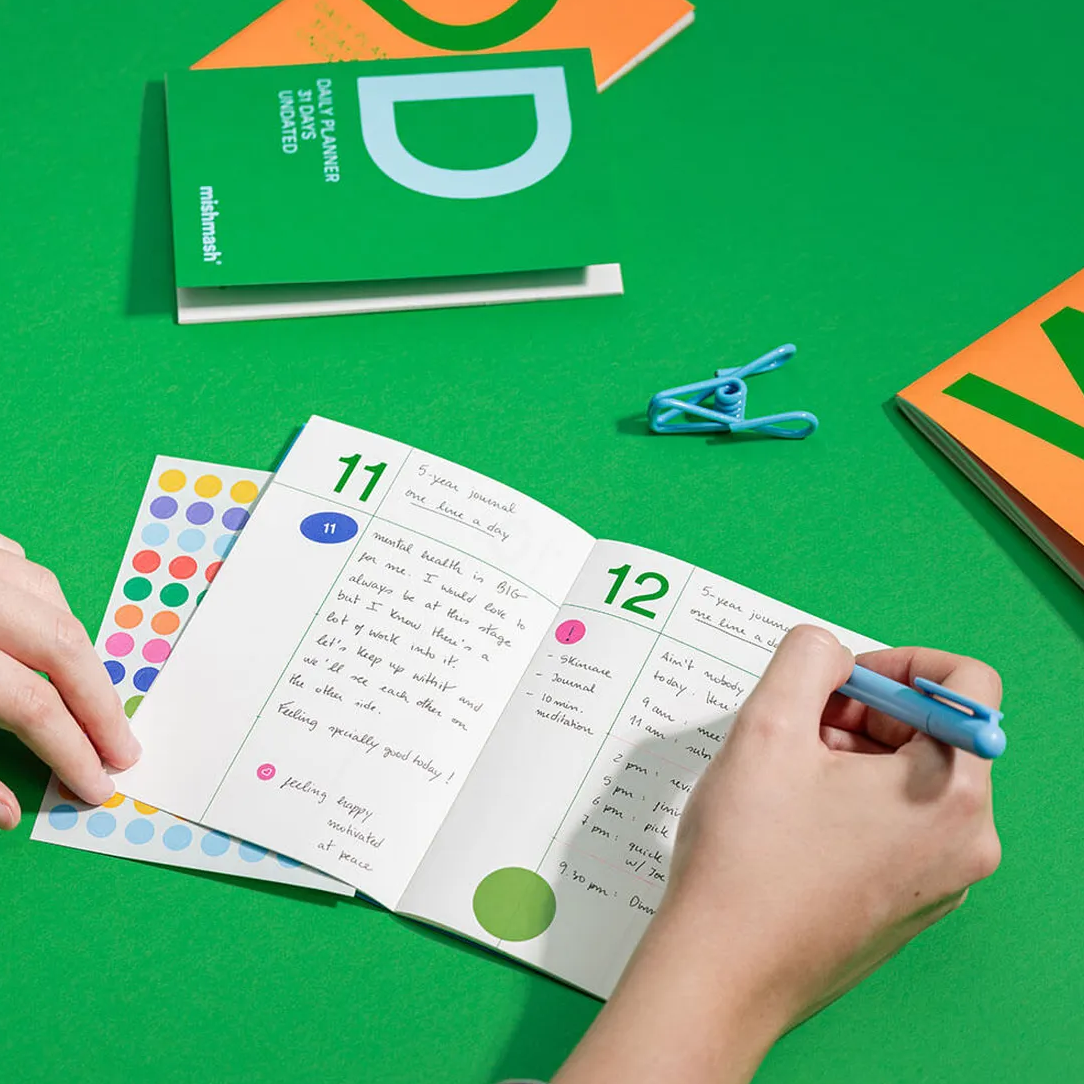Just bought a new planner? Here's how to take advantage of all the handy features a planner has to offer.
You’ve picked out the perfect planner or diary and are all set for the new year, but how do you get the most out of it? With a few handy tips, you can take your organization, productivity, and creativity to the next level.
Create a daily routine
Start each day by reviewing your planner. Write down your most important tasks and set priorities. Creating a set routine will help you stay focused and organized. But how do you do that?
- Start your day with your planner
- Wake up a few minutes earlier each morning to review your planner. Do this with a nice cup of tea or coffee. This will allow you to start your day with a clear picture of your tasks and goals. This will prevent you from getting overwhelmed.
- Use this time to prioritize the most important tasks of the day, for example make a "Top 3". By putting these tasks at the top of your list, you ensure that you focus on what is really important that day.
- Work in time blocks
- Divide your day into time blocks for different activities, such as work, breaks, and personal time. This will help you stay focused and avoid getting overwhelmed by a long to-do list.
- Also, set aside specific times for unexpected tasks or tasks that may take longer than planned. This gives you the flexibility to adjust your schedule without throwing your entire day off track.
- Make use of to-do lists
- It may sound obvious, but an old-fashioned to-do list still works best. Write a daily to-do list with all the tasks you want to accomplish. Mark the tasks that are important for that day and then check them off! This will give you a sense of accomplishment and help you stay motivated.
- Hold check-in moments
- Schedule two or three check-ins throughout the day to keep a pulse on your progress. Use these moments to update your list, shift tasks, or adjust your focus as needed.
- For example, a quick check-in after lunch can help you get back on track if you've been distracted.
- Reflect at the end of the day
- End your day with a short reflection. Look at what you have achieved and what may have been left behind.
- Make note of any challenges you encountered and think about how you can address them next time.
- If you were unable to complete certain tasks, schedule them for the coming week so they don't get lost.
Establishing a daily routine with your planner will help you stay organized and also consciously work toward your goals and productivity. With this habit, you will start each day with a plan and end it with a sense of accomplishment.

Use color coding
Color coding helps you to quickly get an overview. Use different colors for work, personal tasks, appointments and deadlines. This way you can see at a glance what awaits you.
Plan ahead
Take some time each week to plan ahead. This will help you manage tasks better and avoid last-minute stress. Don't forget to schedule time for yourself too!
- Make an overview of the week:
- Use the weekly layout in your planner to create an overview of the week ahead. Note down regular appointments such as meetings, deadlines, and personal commitments.
- Also add in personal tasks, like grocery shopping or time for hobbies, so you have a balance between work and play.
- Set priorities
- As explained earlier, first determine the most important tasks and goals for the week. For example, use a system such as A (high), B (medium), and C (low) to make it clear which tasks need to be tackled first. You can also do this using stickers or highlighters.
- Schedule the most important or challenging tasks for the times when you are most productive, for example in the morning or after your lunch and walk.
- Break down large projects:
- When working on larger projects, break them down into smaller, manageable tasks to avoid getting bogged down. Schedule these tasks throughout the week so you can make steady progress without getting overwhelmed.
- Be prepared for deadlines by planning steps well in advance so you can accommodate unexpected setbacks.
- Be flexible and adapt where necessary:
- While planning ahead is important, it is equally crucial to remain flexible. Sometimes things don’t go as planned, so make sure you have room in your schedule for unexpected events or tasks.
- Use time blocks as in the step mentioned earlier.
- Also plan time for yourself:
- Don't forget to schedule time for self-care and relaxation. Think of walking, exercising, reading, painting, making music, spending time with your pets or just taking a moment to rest. This will ensure that you are not only productive, but also stay mentally and physically balanced.
- Block out this time as seriously as you would work-related appointments so you don't overload yourself.
Planning ahead can help you reduce stress, deal with unexpected surprises, and work toward your goals in an organized manner. It gives you a sense of control and helps you manage your time effectively, both in the short and long term.
Time to personalize your planner
The best part, personalizing your planner! Of course you can go wild with stickers, washi tape, gel pens, pencils, stamps and brush pens. This makes your agenda even more fun to use and also motivates you to stay organized.
I've put together some creative tips and ideas to make your planner completely your own:
- Use Stickers and washi tape
- Stickers: Add color and personality with stickers. You can use them to mark important tasks or appointments, or just to liven up pages. There are sticker sets designed specifically for planners, with icons for appointments, deadlines, holidays, and more.

- Washi Tape: This versatile tape comes in a variety of colors and patterns. Use it to mark page edges, create chapters in your planner, mark off sections, or even use it as a marker for recurring tasks. Washi tape is easy to remove, so you can change it up whenever you want.

2. Color coding:
- By using different colors for specific tasks, such as work, home, and social activities, you can see at a glance what your agenda has in store for that day or week. Use colored pens, highlighters, or stickers to achieve this effect. You can also create an introduction with chapters this way.
3. Handlettering and Doodles:
- Make your planner visually appealing by using hand lettering for headings, month names, or important tasks.
- Add simple doodles next to your tasks or appointments. It makes planning more fun and gives your planner a unique look.
4. Photo collages and inspirational quotes:
- Add photos of family, friends, pets, or memories that motivate you. You can create a collage on the cover of each month, or reserve a special place in your planner for photos.
- Write inspirational quotes or affirmations in different places in your planner. These can motivate you to keep going, even on the hardest days.
5. Tabs and Markers:
- Use tabs to quickly access important sections of your planner. This is useful if you have different sections for work, personal tasks, or notes.
- Markers such as paperclips, ribbon markers, post-its, washi tape or other stickers can be used to mark specific pages that you need often. This allows you to quickly browse.
6. Custom Layouts:
- While many planners have a set layout, you can add your own custom sections. For example, if you have a specific daily task that comes back every week, you can create a template that you use again and again.
Reflection and points for improvement
At the end of each month, reflect on what went well and where improvements can be made. Adjust your planning techniques for the coming month to be even more effective.
With these tips, you can get the most out of your favorite planner or agenda and transform your daily planning into an efficient and enjoyable routine.


